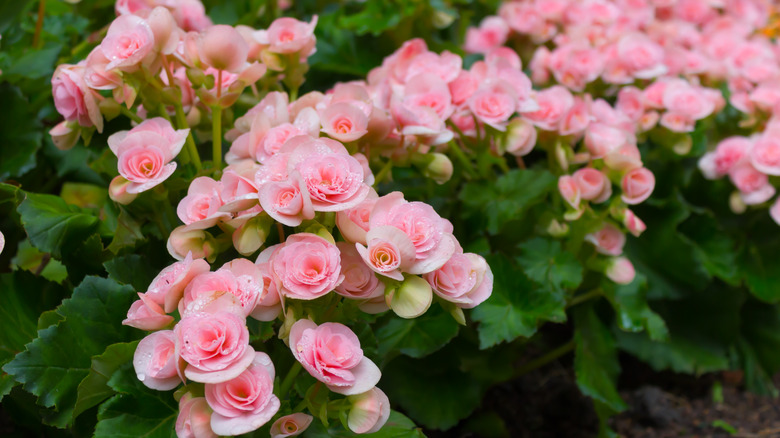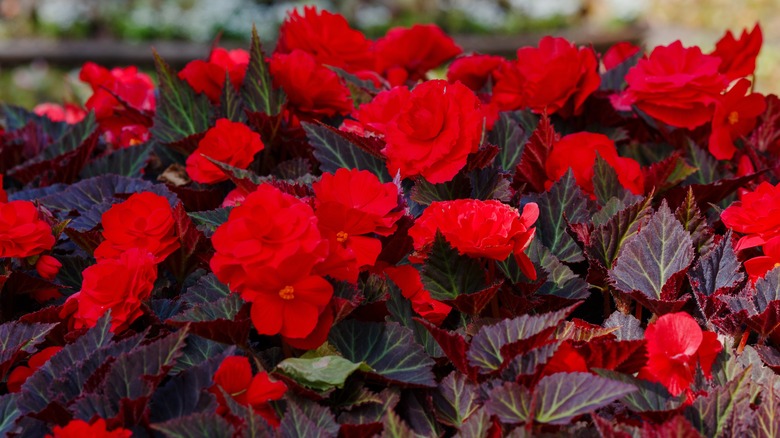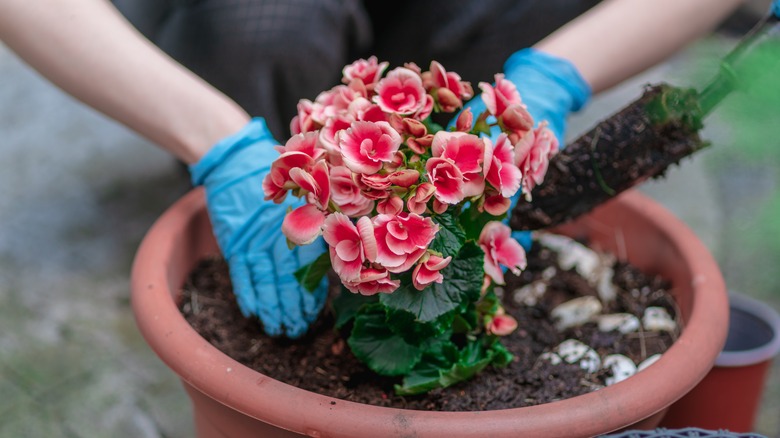Which Begonia Flowers Are Invasive And Which Make A Beautiful Addition To The Yard
Begonias are beautiful flowers that can bring your outdoor space to life, but some varieties may be invasive where you live. Tiffany Selvey, our Master Gardener, explained exclusively to House Digest that different types of begonias will be invasive to different areas. "There really isn't one single invasive species for the U.S.; it depends entirely on the region," she said. "For example, the clubed begonia (Begonia cucullata) is invasive in parts of Alabama and Florida, according to the Invasive Plant Atlas of the United States."
Because of this, Selvey suggests using your local extension service to help you grow a gorgeous garden. By contacting nearby university extensions, you can find out if a certain species of begonia will grow well in your garden or if it's invasive in your area. While these flowers might not sound too harmful, they can affect other plants as well as insects and birds, according to Selvey; however, if you already have some of these begonias growing on your property, they should be easy to remove.
Problems with invasive begonia flowers
These beautiful flowers might not seem threatening, but having an invasive plant growing in your garden or yard can cause some issues. Selvey explained exclusively to House Digest that when invasive begonias are growing where they shouldn't, they can have negative effects on plants and wildlife around them, including pollinators. "Invasive species are less appealing to pollinators and other beneficial birds and insects, so planting them takes the place of something that's better for the ecosystem," she said. Rather than allowing invasive begonias to take up room in your garden, try swapping them out for a different variety that's not considered invasive in your region.
This can be beneficial for nearby plants as well, according to Selvey: "[Invasive begonias] also tend to choke out more beneficial plants because of their aggressive growth habits." By choosing a different variety of this plant for your yard, you can help out beneficial birds, insects, and plants and support your local ecosystem.
If you happen to find invasive begonias growing on your property, Selvey recommends simply pulling them out of the ground by hand, which should be easy due to their shallow roots. You'll also need to watch for seedlings and pull those as well. Sheet mulching can be laid over the area to suffocate the young plants if they keep popping back up or there's a lot of them in a bigger space.
Making noninvasive begonias a beautiful addition to your yard
Though begonias are not native to the United States, there are many different species and some won't be invasive in your area. Selvey told House Digest exclusively that not all non-native plants are considered invasive, and you can still grow gorgeous begonias around your home or in your garden. As long as you check that the specific begonias you're planting aren't invasive, you won't need to worry about wreaking havoc on your local ecosystem.
Selvey also noted that some types of this flower may require different care. "In most regions, begonias are grown as annuals," she said. "Different species will thrive in shade or full sun. My best advice is to know what kind of begonia you have and place it in the ideal conditions for that variety." When checking if the flowers are invasive or not, you might also look into how to care for your specific variety.
Like many plants, begonias like nutritious, damp soil, according to Selvey. "Generally speaking, consistently moist soil that doesn't stay soggy, with a good balance of nutrients, will help begonias thrive," she advised. By researching which begonias are best for your region and how to care for them, you can make these flowers the most beautiful addition to your yard.


